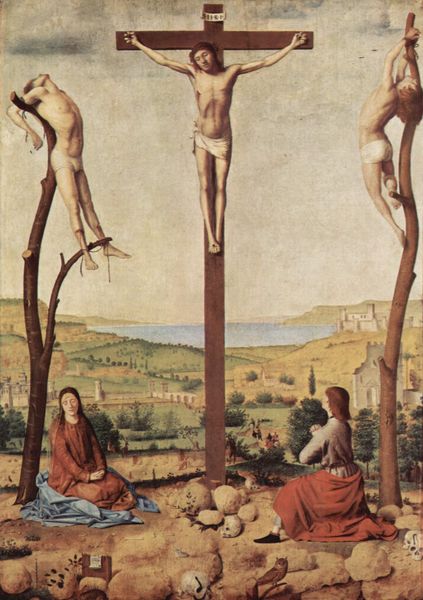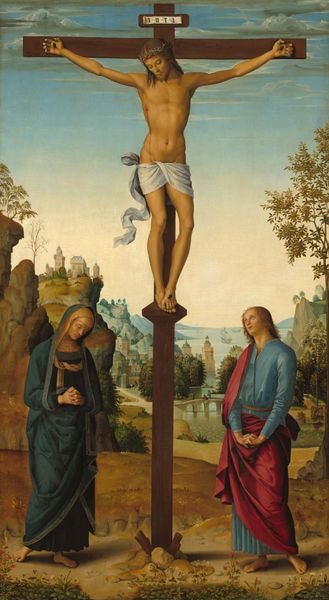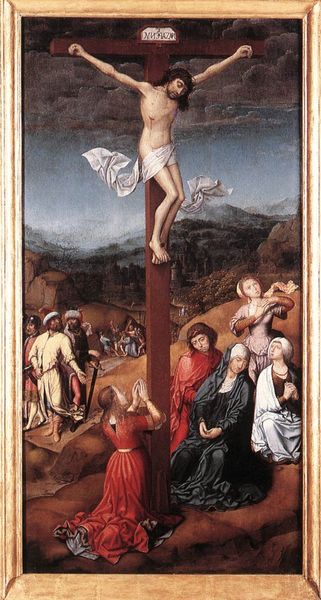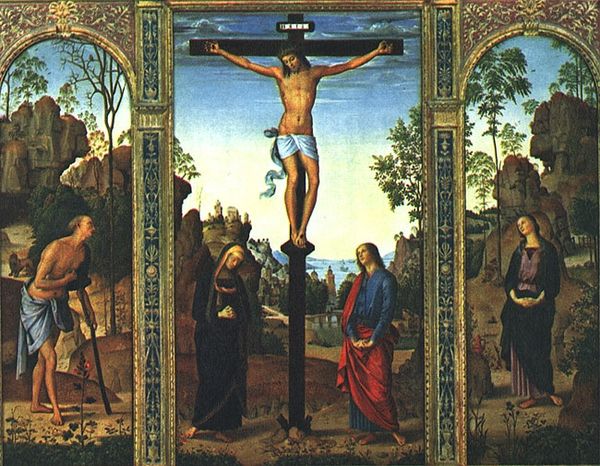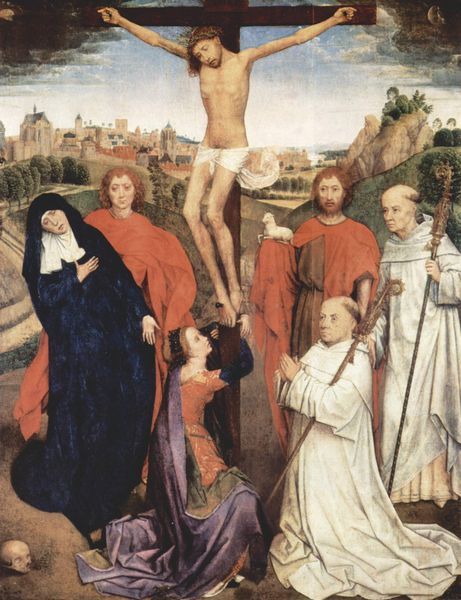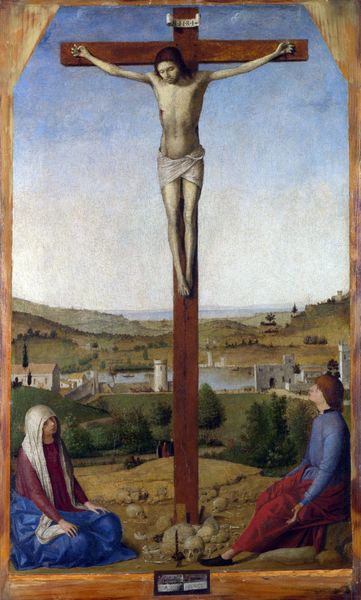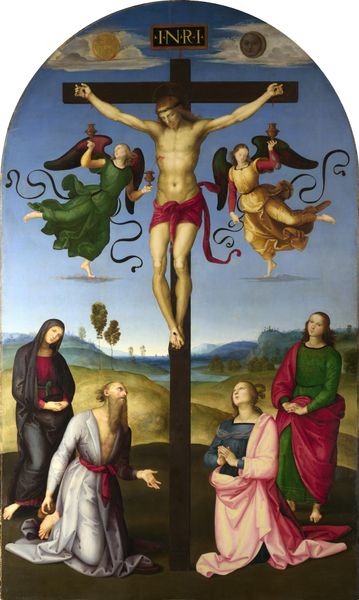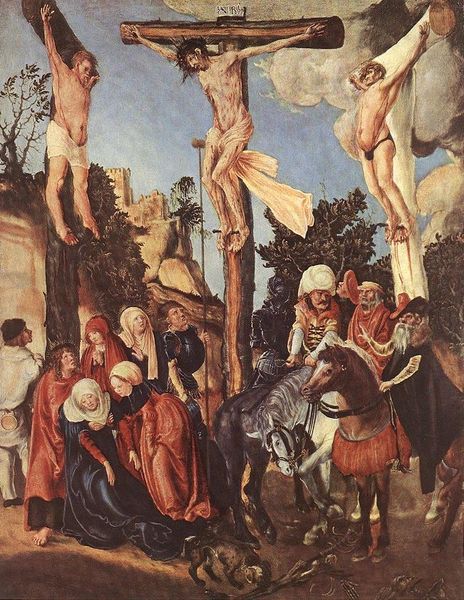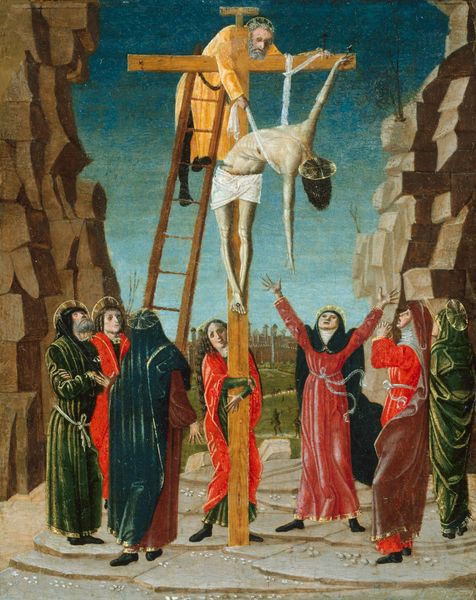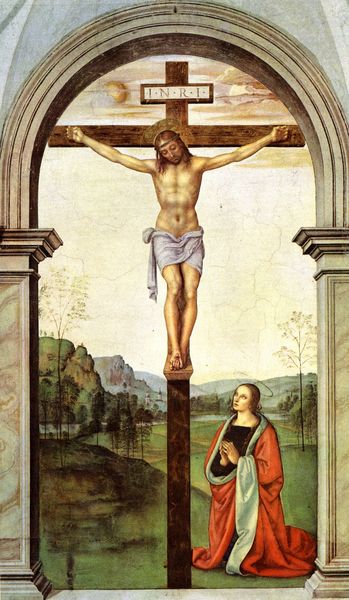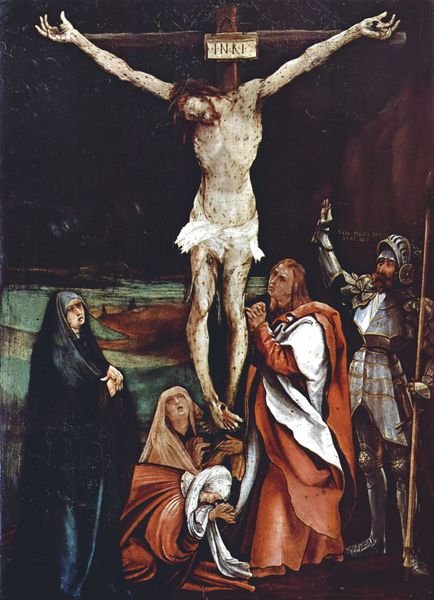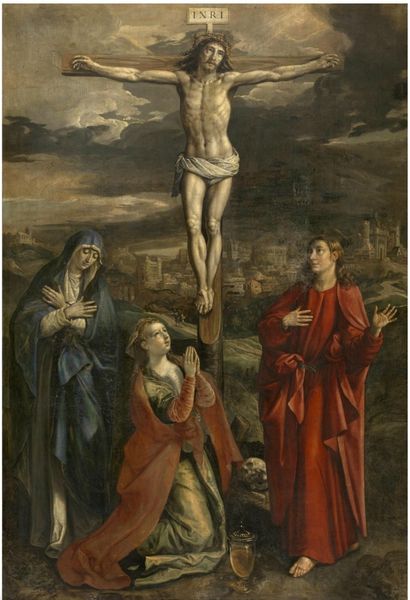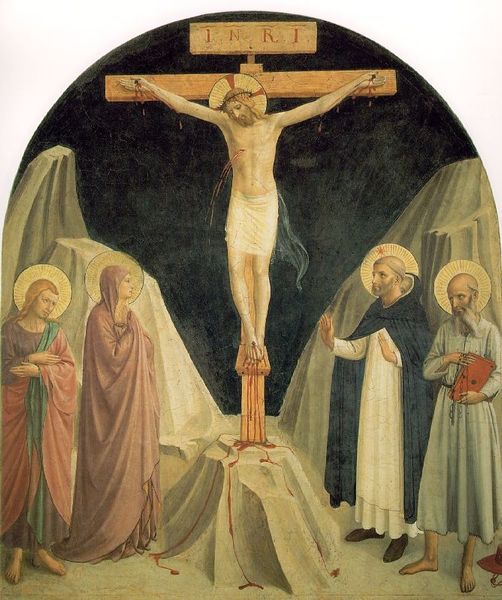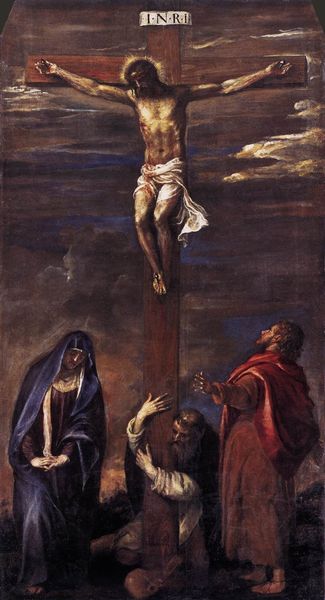
painting, oil-paint
#
painting
#
oil-paint
#
landscape
#
figuration
#
oil painting
#
jesus-christ
#
cross
#
christianity
#
crucifixion
#
history-painting
#
italian-renaissance
#
realism
#
christ
Dimensions: 39 x 23.5 cm
Copyright: Public domain
Editor: This is Antonello da Messina’s “Crucifixion,” an oil painting from 1455. What immediately strikes me is the contrast between the serene landscape background and the brutal scene of the crucifixion in the foreground. The realism is stark. What can you tell me about it? Curator: Look closely at the oil paint. Messina's access to this medium—relatively new at the time—significantly impacted the level of detail and realism he could achieve. Oil allowed for layering and blending in ways that tempera, a more common medium, simply couldn’t. How do you think the introduction of this material altered the perception and production of religious art at the time? Editor: It must have opened new possibilities for naturalism, and thus emotional connection. Were patrons aware of the value of materials like oil paint? Curator: Absolutely. Patrons were increasingly aware and invested in the *materiality* of art. Commissioning oil paintings signaled wealth and access to cutting-edge techniques. Consider how the smooth, almost enamel-like surface achieved with oil differs from the more matte, textured surfaces of earlier religious panels. This shift reflects changing tastes, production techniques, and the rise of a consumerist culture around art itself. It's less about the subject alone, and more about showing off your resources. Also note the stark lack of idealization compared to some contemporaries in other regions. How might Messina’s situation have made the choice of oil paint particularly salient, almost performative? Editor: Fascinating. So the choice of oil paint wasn't just about aesthetics, it was about economics and demonstrating power through the acquisition of materials and skill? I never thought of it that way. Thanks for the new perspective! Curator: Precisely. By analyzing materials and context, we uncover hidden layers of meaning and intent beyond the purely representational.
Comments
No comments
Be the first to comment and join the conversation on the ultimate creative platform.
